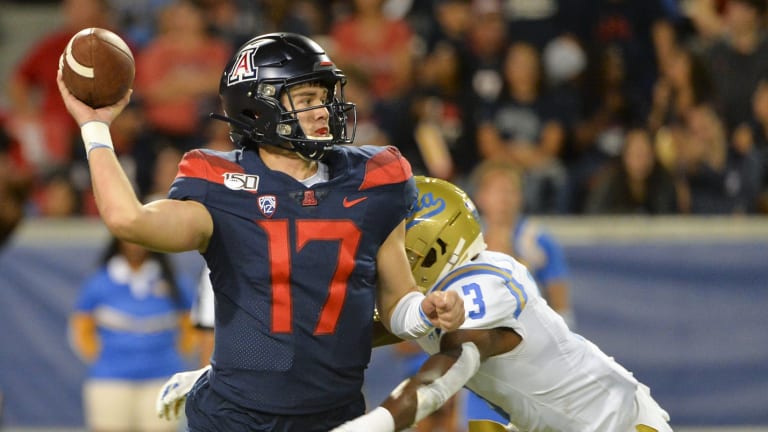
The Daily Fizz: The recipe is lacking some key ingredients

Why is everything such a struggle for Arizona football? Recruiting is a constant uphill climb. Wins come in bunches, but lack consistency. Success is unsustainable from one year to the next. New coaches don’t result in significant change. Individual achievements don’t seem to translate to overall program improvement. What is missing? What are we missing? What ingredients are lacking from a winning recipe? Is Arizona football immune to momentum?
Overall, what’s been happening on the gridiron has been a tough pill to swallow, and no one seems to know how to make swallowing the pill easier.
Let’s be clear about one thing.
Arizona losing football games is not Khalil Tate’s fault. It’s not the fault of Colin Schooler, or Tony Fields, or Lucas Havrisik, or whichever student athlete is assuming punting duties this week.
Granted, Tate has struggled mightily at times. The Arizona defense has more holes in it than a sweater in an abandoned cabin. Special teams have been atrocious. All this being true, Arizona’s struggles are more about the collective than the individuals. After all, Tate ranks fifth in program history with 6,051 total passing yards. Schooler leads all FBS players with an average of 5.43 solo tackles per game. Fields ranks fourth at 4.89 solo tackles per game. In a program famous for its running backs, J.J. Taylor’s 3,182 career rush yards ranks fifth all-time in program history.
Arizona has not been an elite program on the recruiting trail, but they have produced some elite talent on the national stage. If this weren’t true, there would be no way the Wildcats could possibly lead the conference in rushing offense dating back to the Rich Rodriguez Era.
Still, something is wrong and somebody smart better figure it out quickly.
Former coaches like Larry Smith and Dick Tomey were motivators. They put the team first, at all times, even though they had some of the best players taking the field in the history of the program. Their teams certainly had some struggles during their tenure. However, overall, they were winners. They produced results. They had an innate ability to uplift their players to the point that the “team” excelled.
I haven’t seen anything like that in two decades.
John Mackovic was an unmitigated disaster. Mike Stoops had the program heading in the right direction and almost peaking in 2008 and 2009 before slipping and falling hard to the floor of the league. Rich Rodriguez immediately elevated the program in his first three seasons before somehow sliding backwards rather than building on the momentum of a 26-14 start to his career at Arizona and a Pac-12 South Division title. Today, the program is in the midst of a 5-game slide in year two of the Kevin Sumlin Era. It’s simply brutal. The offense is worse now that it was last year. The defense is giving up 37 points per game. Special teams are a disaster.
Where’s the progress?
Are we honestly expected to believe that next year will be better? If it is, what about the following year?
Nothing in life is guaranteed, but without getting to the root cause of exactly what is going on inside the program and inside the minds of the individual players, how are the fans supposed to take anything the programs publicly releases, seriously.
Clearly, the fan base is not buying what the program is selling.
Saturday’s home game against No. 7 Utah should be a sellout. It won’t be. That’s a problem.
No one judging the football program pretends finding the missing ingredients will be easy. Further, we accept change does not occur overnight. We also accept that due to low scholarship numbers, the Wildcats are not exactly playing with a full deck.
For these reasons, Sumlin and his staff have an incredible opportunity to return Arizona football to being a competitive football program. Key contributors on both sides of the ball will be returning next year. Also, due to the low scholarship counts, the staff can go hog wild on the recruiting trail to continue to infuse the program with “their guys”. The combination of experienced contributors and new faces recruited directly by this coaching staff could have positive results. However, player personnel is only half the battle. The more looming battle is figuring out all the little things, the missing ingredients, so to speak, that put a permanent chip on the shoulder of this football program.
Larry Smith figured it out. Dick Tomey figured it out. Will Kevin Sumlin figure it out?
He almost has to because the hard truth is 1998 was 21 years ago. Over the next two decades of Wildcat football, the 2014 season can’t be viewed as the program’s high mark. It simply can’t.